
This goes back to May 2019 at the Sculpture Workshops. I would normally blog when the piece is finished, but things are on hold at present.
I discovered Italian block (thanks Eden) and made the beeswax model (above) for the main part of a commissioned piece remembering the heroes at Dunkirk and La Panne. The design is based on a torpedoed submarine in the Imperial War Museum in London.


I made a clay model and then took a beeswax cast from the clay. The top photo is the wax cast which has been sprued (adding runners for the metal, risers for escaping air and a funnel for pouring in the metal)
The italian block is made by making a flask of chicken wire around the wax, which is stood in pouring position in the flask.

This is draped in hessian soaked in plaster to form a plaster flask surrounding the wax,

The flask is then filled with the plaster mixture to create a solid block around the wax and dried.

The block mould is then heated slowly in a kiln overnight to melt out the wax and fire the plaster mix.

The mould is ready to be poured whilst still hot, so that it doesn’t fracture with the shock of the molten metal. This piece was poured at the end of May.
This traditional method can be used for bronze, silver and lower melt metals, but not for iron.
The Sculpture Workshop is reviewing its safety procedures and stopped all Italian block firing in summer 2019, pending the outcome of this review. Plans are in hand to remodel the metal workshops and I hope that when this happens I can explore Italian block further. I really like the method as offering great scope for design whilst being pretty sustainable and low tech.




 Thanks to Scottish Sculpture Workshop tech team and George Beasley.
Thanks to Scottish Sculpture Workshop tech team and George Beasley.





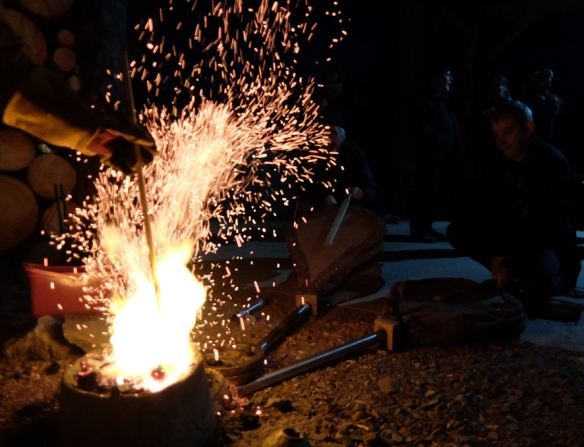
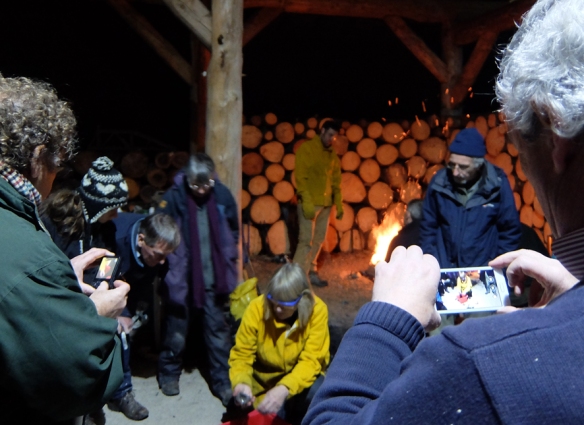
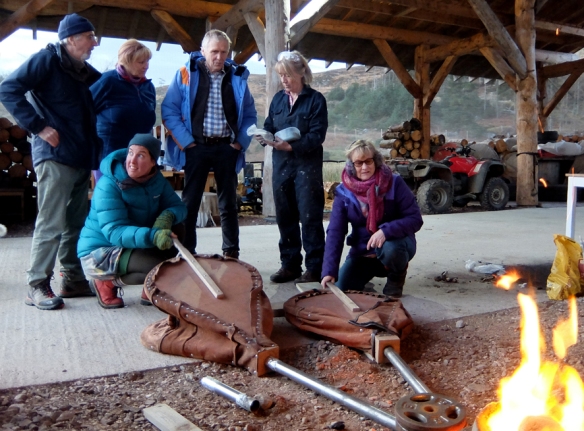
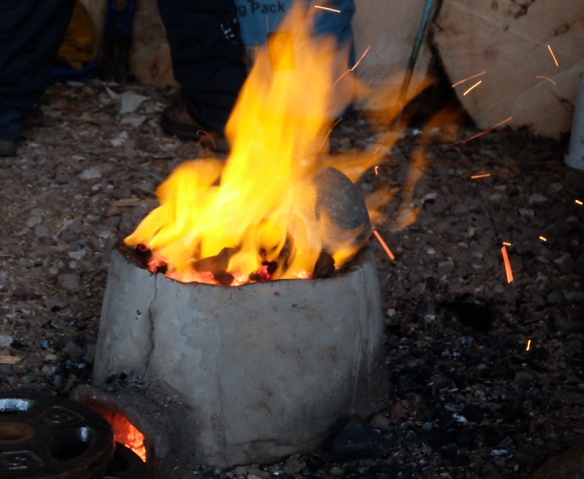 We had some local charcoal courtesy of Chris (although most of it came from the Chinese wholesalers in Dundee). Heather Fulton took loads of photos, some of which I’m using here.
We had some local charcoal courtesy of Chris (although most of it came from the Chinese wholesalers in Dundee). Heather Fulton took loads of photos, some of which I’m using here.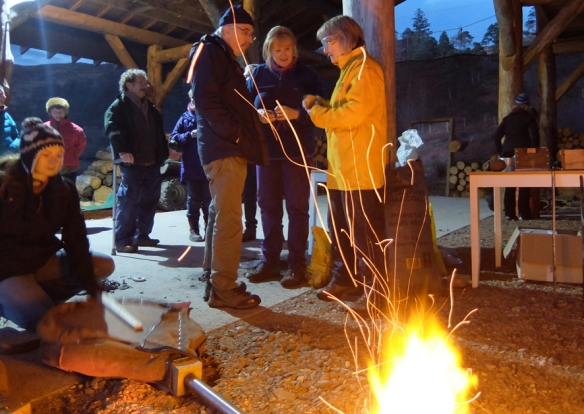

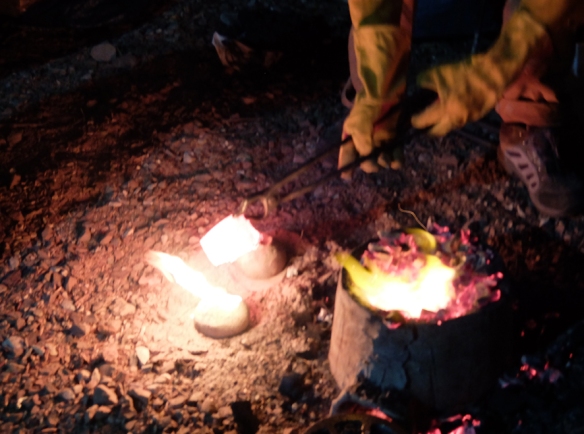
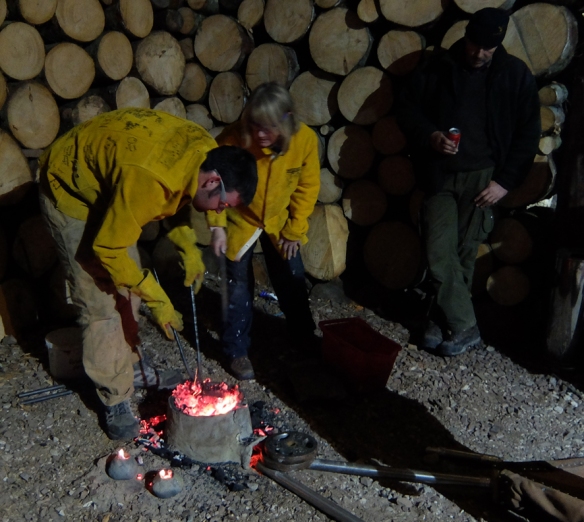

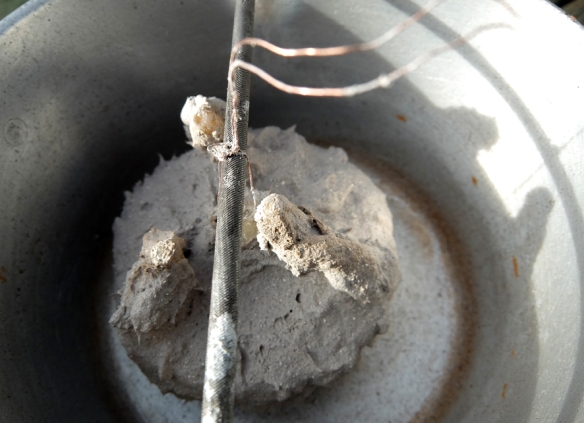
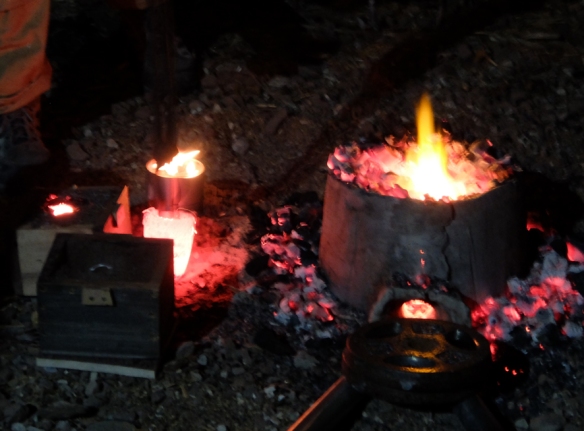


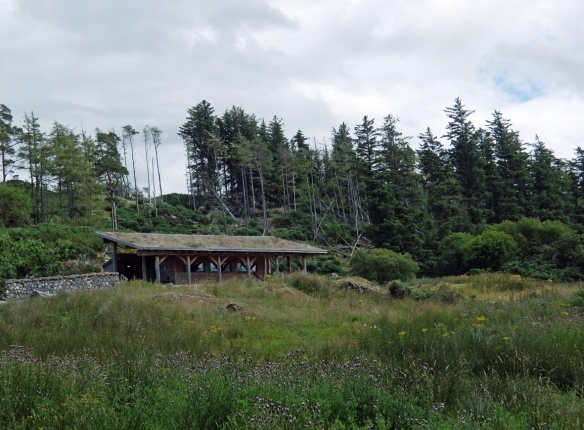
 A view into the inferno
A view into the inferno This is George Beasley lighting the furnace for his demonstration run.
This is George Beasley lighting the furnace for his demonstration run. This is the team discussing roles, the furnace is running on blown air to maintain and build up heat having been lit with the gas torch.
This is the team discussing roles, the furnace is running on blown air to maintain and build up heat having been lit with the gas torch. Adding coke to the furnace onto a charge of scrap iron. The iron scrap melts and drops down to the bottom of the furnace. It is then tapped from the bottom into a crucible for pouring.
Adding coke to the furnace onto a charge of scrap iron. The iron scrap melts and drops down to the bottom of the furnace. It is then tapped from the bottom into a crucible for pouring. Heating the crucible ready for it to receive molten iron for pouring into moulds.
Heating the crucible ready for it to receive molten iron for pouring into moulds. Yvonne taking notes for the log so we know how the furnace is running.
Yvonne taking notes for the log so we know how the furnace is running. Molten iron tapped from the furnace flowing into the crucible for pouring
Molten iron tapped from the furnace flowing into the crucible for pouring Andrew and Uist pouring iron
Andrew and Uist pouring iron My sand moulds with clay along the joins to minimize the amount of burning to the boxes.
My sand moulds with clay along the joins to minimize the amount of burning to the boxes. Eden and I checking how the beach-sand moulds held up
Eden and I checking how the beach-sand moulds held up Dropping the bottom when the last tap has been used. This coke can be cleaned and reused.
Dropping the bottom when the last tap has been used. This coke can be cleaned and reused.














